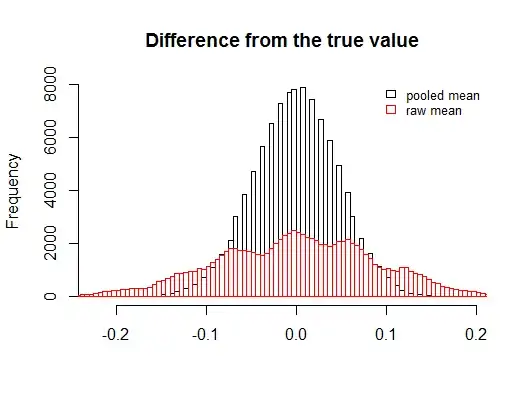[UPDATE] Terms I used: - Weighted average: weighted arithmetic mean - "Unweighted" average: arithmetic mean
I went through some of the forums here and looked for explanations online but I couldn't figure out the answer for this:
If percentages represent probabilities, what does weighted and "unweighted" average of a list of values represent?
Example: There are two shops that sell vegetables and two that don't sell vegetables. All of them ask their customers for feedback on their shopping. They say either that they were happy or they were not. Let's assume that every customers answers.
Veg Shop 1 has 10 customers and 5 are happy. (50% average) Veg Shop 2 has 20 customers and 8 are happy. (40% average) Non-Veg Shop 1 has 15 customers and 5 are happy. (33% average) Non-Veg Shop 2 has 25 customers and 10 are happy. (40% average)
Weighted average of Veg Shops is 43% (13 / 30), unweighted average is 45%. Weighted average of Non-Veg Shops is 37.5% (15 / 40), unweighted average is 36.5%.
I know that with weighted average distribution matters and I feel that it implies that there is correlation between the values aggregated. However, in this example, if I count weighted average I accept that there is correlation, but I discard the correlation between Veg and Non-Veg shops.
I can't really phrase the probabilities, but it feels that unweighted average is an answer to "my expected performance (based on customer feedback) among other shops of the same type", and weighted average is an answer to "the chance of a customer being happy, when going to any of the shops of the same type".
It is still not really clear for me, though. Does anybody have some clearer ideas on what the probabilities would mean?
Also, is it possible at all to assign meaningful values to both weighted and unweighted average on the same dataset?
Thanks, Norbert
